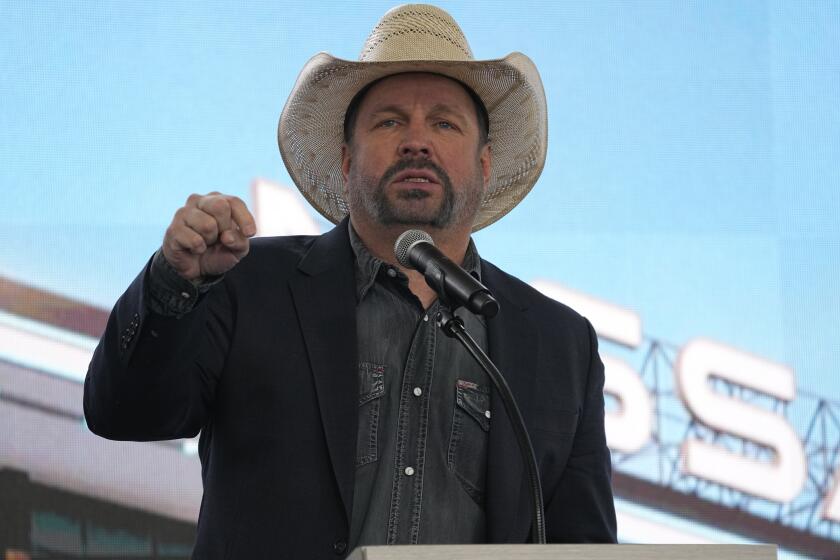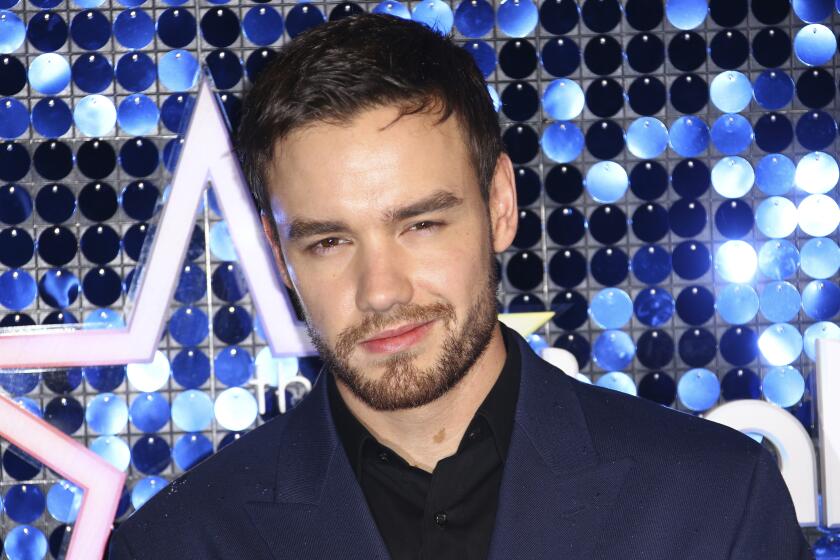We Need a Unique Stylist, Not a Clone : Commentary: Great female jazz singers are rare these days. But even more rare are true innovators.
Where have all the great jazz singers gone?
Perhaps the question calls for a few qualifications. First, we are referring to women. In recent years the term male jazz singer has become almost an oxymoron, with such rule-proving exceptions as Bobby McFerrin. All the way back to Bessie Smith, females have been the dominant vocal force.
In the 1920s we had Smith and the other blues giants. The swing era (1935-45) produced five major influences: Billie Holiday, Mildred Bailey, Sarah Vaughan, Ella Fitzgerald and Anita O’Day. Three have died, Fitzgerald has retired, O’Day, at 74, hangs in there.
Then the real question is: Where are the new jazz singers coming from? Why are we bombarded regularly (and vainly) with press reports announcing the new Ella, the next Sarah?
What is needed, and remains undelivered, is someone whose impact owes little to any predecessors. Consider the conditions that prevailed in the days of the true innovators.
All five pioneers had the big-band experience so valuable to the development of a musical ear: Holiday with Count Basie and Artie Shaw, Fitzgerald with Chick Webb, Vaughan with Earl Hines and Billy Eckstine, Bailey with Red Norvo, O’Day with Gene Krupa and Stan Kenton. Theirs was a small world, with only four record companies and almost no vocal competitors.
They also had few influences. Holiday, while acknowledging the impact of Bessie Smith and Louis Armstrong, sprang to maturity as full blown as Athena out of Zeus’ head. Moreover, she never scatted.
Fitzgerald listened to Connee Boswell (the principal singer with the Boswell Sisters, a vocal trio popular in the early 1930s) but soon became an original and did no scatting until a decade into her career. (That is an art too many are too willing to tackle, given the difficulty in sustaining the high level of innate musicianship required.) Vaughan had her musicianly ear, Bailey and O’Day their distinctive timbres, all from Day 1.
*
Today’s aspiring artists, many of them unsophisticated ladies who find themselves lost in the shuffle of managers, press agents, producers (who may tell them, “Don’t sing jazz, it ain’t commercial”), vocal overdubs and overwhelming orchestral backgrounds, are never left to develop spontaneously. Their success may depend on the size and clout of a record company.
Bruce Lundvall, in a position of influence as president of Blue Note Records, believes that there will never be another Fitzgerald or Vaughan (“They have enough sound-alikes around already,” he says). However, he says a few recent arrivals show promise, including Cassandra Wilson,who records for Lundvall’s Blue Note label. “I’m very excited about Cassandra Wilson’s new album, ‘Blue Light ‘Til Dawn,’ ” he says. “She is a natural both as writer and singer. She is true to the art form and has a long road ahead of her.”
To some listeners Wilson may now seem like a musical glutton who would like to swallow jazz, funk, soul, rock, hip-hop, blues and anything else within earshot. There are overtones of desperation pitch, with too many dreary songs and no two tracks with similar instrumentation. Earlier albums in which she stuck to jazz standards came off more convincingly.
Lundvall may be more on target with Dianne Reeves, “a wonderful singer--she has real staying power.”
But what of Madeline Eastman? She has the dual disadvantages of living in San Francisco rather than New York, and of being on a hard-to-find-label, Mad-Kat, but her rhythmic renovations of “I Only Have Eyes for You” and her poignant reading of the theme from “Bagdad Cafe” bespeak a major personal potential.
*
Ernestine Anderson, whose roller-coaster career dates to the early 1950s, had her finger on the pulse of the problem: “In the 1950s, jazz was thriving. In the 1960s, when rock ‘n’ roll became the music of America, I had to move to Europe to keep working. Today, we’re experiencing rap and hip-hop. Jazz people are not respected. When Betty Carter finally won a Grammy, it was presented to her off-camera. Jazz people don’t get their dues--don’t get their 40 acres and their mule!”
Anderson’s view is reflected in such cases as that of Rachelle Ferrell. Although she has an interesting album of jazz material, it has been released only in Japan; she was introduced to the U.S. market, presumably for protection, in a CD of conventional pop/funk.
A promising debut last year was that of Kate McGarry (“Easy to Love” on VTL), who like almost everyone else acknowledges Fitzgerald as a primary inspiration, along with Jon Hendricks, Carter and Mark Murphy.
One tends to forget, though, that through the years certain singers were influenced not so much by their peers as by instrumentalists. A classic case was that of Peggy Lee, whose recording career goes back to 1941 (with Benny Goodman) and who grew up listening to the brand-new Count Basie band on the radio from Kansas City. Her phrasing, she says, derived from listening to jazzmen.
“The first singer who influenced me was Maxine Sullivan. I just loved the way she phrased. Later, I heard Billie Holiday, whom I admired but never tried to copy.” Sullivan was known as the “Loch Lomond Lady” after her record of that song became a hit in 1937. For several years she was teamed with a sextet led by her husband, bassist John Kirby, with whom she shared a popular radio series.
Lee hears no incipient jazz megastars on the horizon, but has some wise words of counsel for those who would enter the field: “You have to be prepared to take your lumps, pay your dues, insist on singing what you believe in, polishing your style as you go along. It’s true that the music business today is not conducive to taking that route, and not many people want to try it, but it can be done.”
One who was able to try it was Nnenna Freelon. Now in her mid-30s, she has spent most of her adult life in Durham, N.C., free from baneful influences and busy raising a family. Her first album two years ago on Columbia revealed this purity of purpose and courage of conviction.
To point out that there are no vital additions to the jazz ranks is not to imply that there is a shortage of estimable talents. In terms of style, phrasing, clarity of diction, passion, choice of repertoire and accompaniment, several performers come to mind.
Vanessa Rubin (“Pastiche” on Novus) is an unqualified jazz singer whose influences have been virtually all the significant vocal arrivals of the last two or three decades. Susannah McCorkle (“From Bessie to Brazil” on Concord) is a sensitive singer with an eclectic library of songs from every era. Sheena Easton in “No Strings” (MCA) dipped into jazz/ballad waters with a success surprising to those who thought of her exclusively as a pop artist. She even tackled “Moody’s Mood for Love.”
The one element lacking, or at least not proven, among even the most promising of these women is durability. True, in 1943 it did not occur even to the most ardent supporters of Holiday and Fitzgerald that their idols’ records would still be played, their reputations greater than ever, half a century into the future. Can any of today’s still maturing talents claim comparable staying power?
More to Read
The biggest entertainment stories
Get our big stories about Hollywood, film, television, music, arts, culture and more right in your inbox as soon as they publish.
You may occasionally receive promotional content from the Los Angeles Times.










